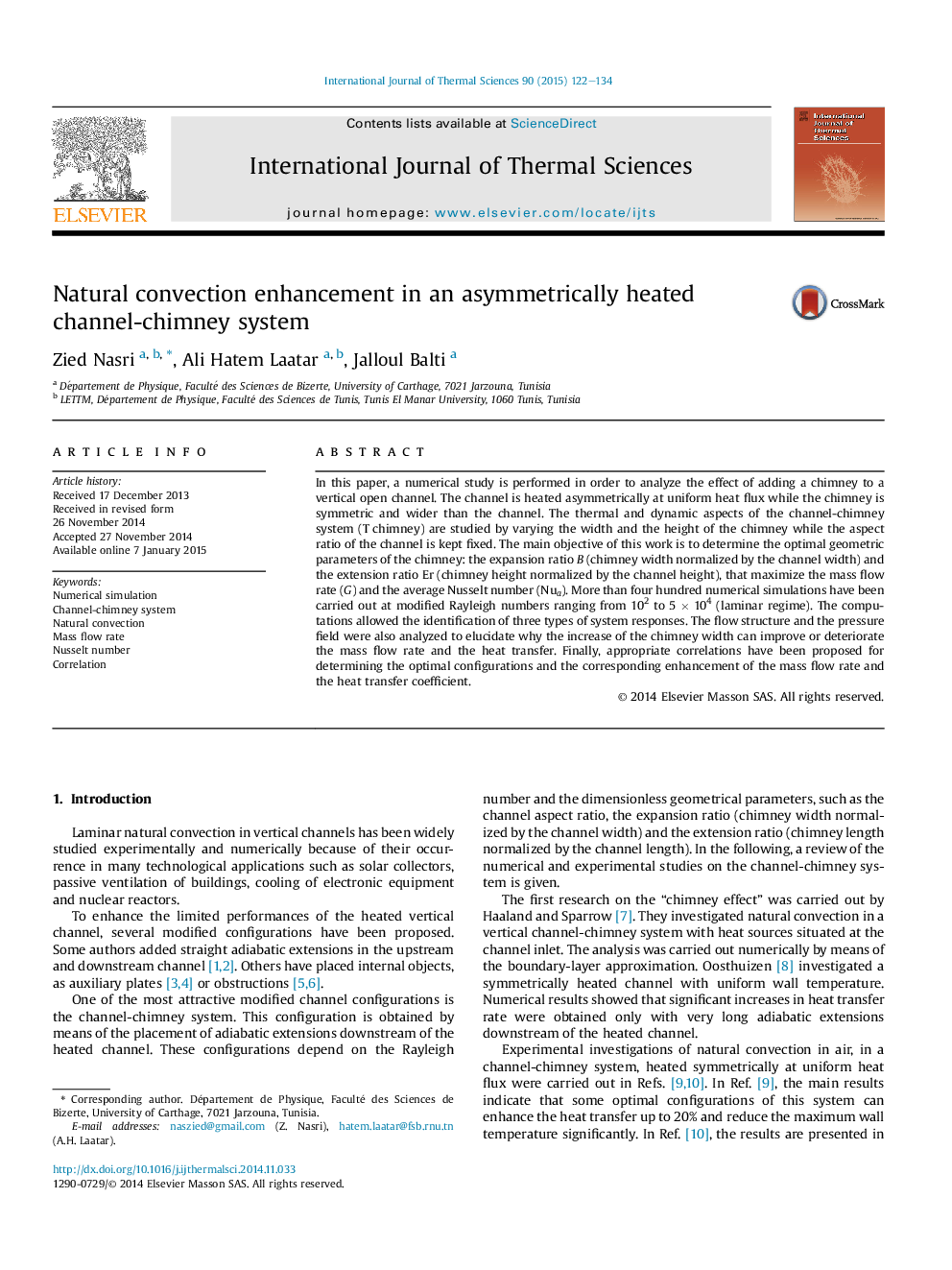| Article ID | Journal | Published Year | Pages | File Type |
|---|---|---|---|---|
| 668113 | International Journal of Thermal Sciences | 2015 | 13 Pages |
•The enlargement of the chimney generally improves the channel performances.•The optimal chimney width maximizes both the mass flow rate and the Nusselt number.•The system enhances more significantly the convective heat transfer for low Ra.•The flow structure and the pressure field elucidate the system responses.•Appropriate correlations are given for determining the optimal configurations.
In this paper, a numerical study is performed in order to analyze the effect of adding a chimney to a vertical open channel. The channel is heated asymmetrically at uniform heat flux while the chimney is symmetric and wider than the channel. The thermal and dynamic aspects of the channel-chimney system (T chimney) are studied by varying the width and the height of the chimney while the aspect ratio of the channel is kept fixed. The main objective of this work is to determine the optimal geometric parameters of the chimney: the expansion ratio B (chimney width normalized by the channel width) and the extension ratio Er (chimney height normalized by the channel height), that maximize the mass flow rate (G) and the average Nusselt number (Nua). More than four hundred numerical simulations have been carried out at modified Rayleigh numbers ranging from 102 to 5 × 104 (laminar regime). The computations allowed the identification of three types of system responses. The flow structure and the pressure field were also analyzed to elucidate why the increase of the chimney width can improve or deteriorate the mass flow rate and the heat transfer. Finally, appropriate correlations have been proposed for determining the optimal configurations and the corresponding enhancement of the mass flow rate and the heat transfer coefficient.
